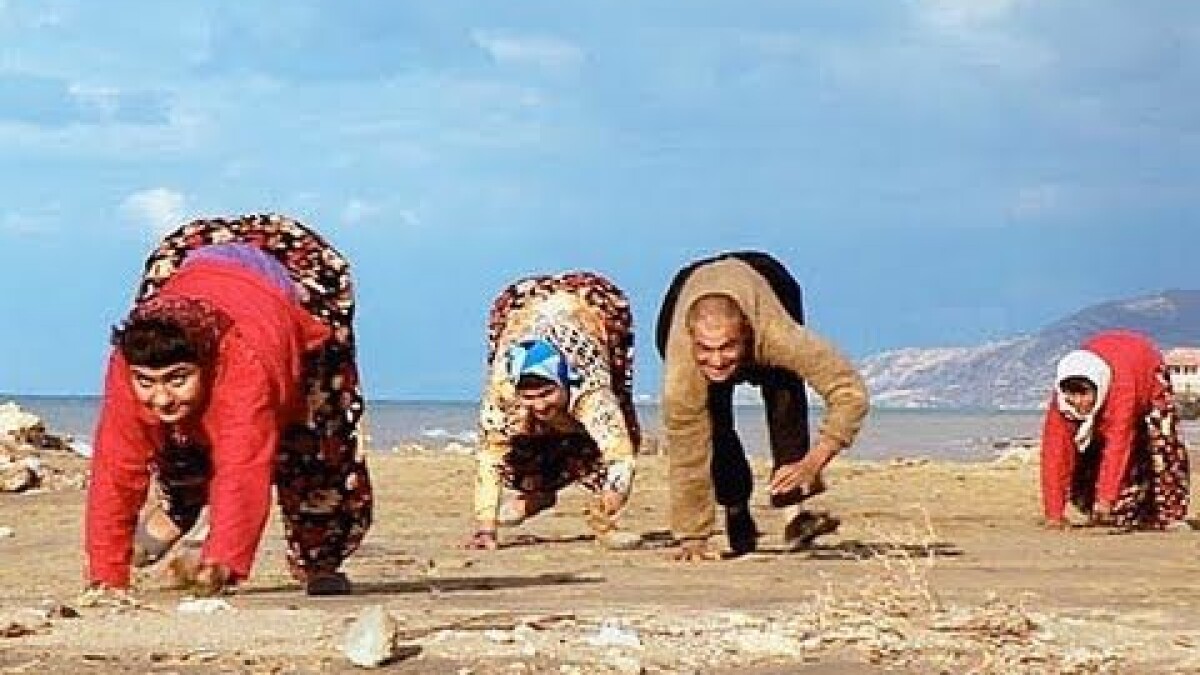The world has many homos semi-sapiens. Is that devolution or will they eventually become extinct?
In a village of dirt roads and stone dwellings just north of the Turkey-Syria border, a slight rain falls as a hunched man clad in black wobbles down the pavement. At first, glance, as seen in a BBC documentary, he appears inebriated.
He clings to a stone wall to his left and lurches uneasily. But then he slowly lowers his hands, encased in green slippers, to the muddy ground. Gingerly, he begins to walk away and out of the frame — on all fours.

The man is one of five children in a religious family bedeviled by an unusual condition that has flummoxed and fascinated scientists since the scientific community first discovered them in 2005. The parents are normal. But five of their progeny are quadrupedal. They walk appendages down, bottom in the air.
Earlier theories held the family’s gait signaled a devolution to our primate ancestry, but fresh research published Wednesday claims those earlier theories had it all wrong. It’s not devolution. It’s an adaptation to an unforeseen and rare disorder.
What is undisputed: The five Kurdish siblings — four female, one male — are like few others on the planet.
They’re impaired with something called Uner Tan Syndrome, named after the Turkish evolutionary biologist who first described them. Characterized by loss of balance, impaired cognitive abilities, and a habitual quadrupedal gait, it’s a syndrome, Uner Tan theorized, that suggested “a backward stage in human evolution.” In other words, the siblings were thought to be walking proof that our evolutionary advances could — poof — vanish, and we’d be back to walking on all fours.

“The idea of reverse evolution was just a flash, an ‘aha’ experience,” Tan told NeuroQuantology. “I suddenly realized they were exhibiting the walking style of our ape-like ancestors. … I was the scientist who first suggested the existence of reverse evolution in human beings.”
But there were some problems with Tan’s suggestion. British researchers pointed out in a separate study that the family’s walk differs from that of some primates in a crucial way. They put all their weight on their wrists. Not on their knuckles.
And now, a new study published Wednesday in PLOS One further debunked the notion that the siblings represent reverse evolution. They do not, as Tan earlier surmised, walk like primates. Primates walk in a diagonal sequence, in which they put a hand on one side and a foot on the other, repeating this pattern as they progress forward. These humans, meanwhile, walk laterally — similar to other quadrupeds.
According to the researchers, their walk is a byproduct of a hereditary condition that causes cerebellar hypoplasia. This condition complicates their sense of balance — and to adapt, they have developed quadrupedalism.
Still, their agility on all fours is impressive. “Their preferred form of locomotion, even when climbing or descending steps, is on all fours,” stated another study. “They move in this way fluently and effectively, and seemingly without discomfort. This contrasts markedly with normal adult humans who find such a gait — if and when they try it — tiring and uncomfortable even after practice.”
The syndrome has another price. The siblings are able to speak, but barely, and have developed their own language to communicate with one another. According to Tan’s original study, they use fewer than one hundred words and had difficulty answering some questions.
“What is the year?” Tan said he asked one of the siblings.
“Eighty,” one said. “Ninety,” another replied. “Animals,” said another. “July,” explained the fourth. “House,” the last said.
“What is the season?”
“Animals,” said one.
“What is this?” he said, pointing to a red shoe.
“Tomato,” one offered.
The siblings have 14 brothers and sisters who are not affected by the condition. It’s a large family that has at times protected them. Teased by some of the greater community, researchers found the four sisters stay close to home and crochet with needle and thread.
The man, meanwhile, is most adventuresome and “remarkably agile.” He wanders about the village collecting bottles and cans and places them inside a pouch made by his shirt, which he holds up with his teeth.
“The Ulas family remains a mystery to the scientific community, and the controversy surrounding them continues,” wrote Turkish psychologist Defne Aruoba. “Every once in a while, a new scientist appears in the village and offers a new treatment or asks for the father’s permission to do more testing. He doesn’t say yes and he doesn’t say no. He is in complete surrender to what life brings. His only concern is the welfare of his disabled children after he dies.”
Source: https://newsinstact.com/








